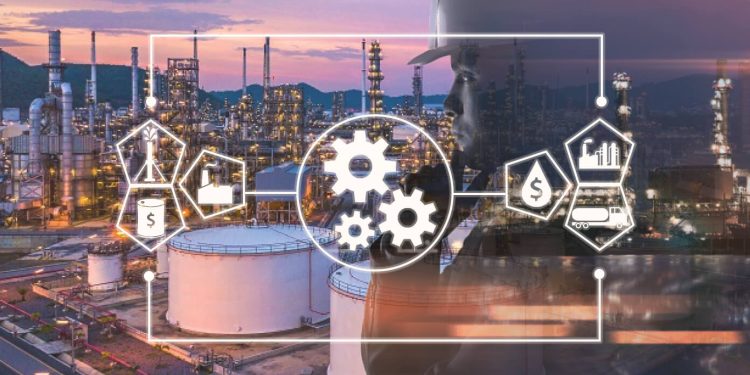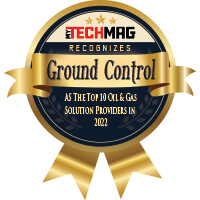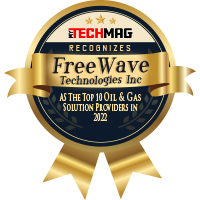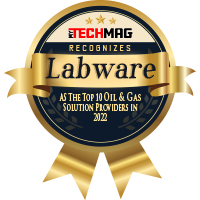Uncertain world markets and ever-increasing customer expectations have necessitated for oil and gas industries to level up their game. The oil & gas industry must integrate its operations to become faster and more efficient, whether in extraction, distribution, or banking. In this context, an increasing number of businesses seek enterprise technology to help them enhance their processes and decrease risk.
While the oil & gas industry rides the ebb and flow of market forces, an ERP system gives them a birds-eye perspective of their operations, complete with immediate information on resource availability. It also helps with cost containment by minimizing waste and tracking how the organization handles administrative and labor expenditures.
As a result, this article will educate you about the five critical characteristics that any ERP software used by energy firms must-have.
1. Localization of Oil and Gas ERP
Every aspect of the oil & gas industry is international. One nation has wells, whereas another has refineries. Furthermore, customers are located all around the world. Every place has its own separate tax system based on sales volume or the quantities of products moving into or out of the area. Doing commerce in any capacity necessitates providing the financial records requested by taxation authorities.
In order to digest, transmit, and review multilingual material for the entire financial accord in various regulatory settings, the energy ERP software requires a modular design. It ought to be prepared to provide distant corporate customers with an overall cost structure for each process, including direct and overhead expenses, in multiple languages. It is a cost-effective and regulatory-friendly tool to organize world energy project procurement and supply charges.
Performing business operations also necessitates working to reduce the company’s tax liability. O&G ERP must handle both the regional reporting requirements as well as the total global load.
Also read: Technologies to Drive Profits, Efficiency, and Safety in the Oil and Gas Sector
2. Asset Management
The assets needed in the O&G industry are costly. Whether organizations are managing offshore oil rigs, refineries, or transnational pipelines, vast sums are involved. Your O&G ERP software must either help you retain those resources, creating value indefinitely, or assist us in determining where it can be used to generate more value.
When more equipment is integrated into the machinery and infrastructure that these organizations use regularly, greater focus will be put on capturing and adjusting basic information from such gadgets within the O&G ERP system. It’ll be necessary to validate that the ERP software can transfer this information to the proper systems.
For example, suppose the oil and gas company is required to perform regular inspections at various locations for contract purposes. In that case, managers could use dashboards to view the geolocation, machine usage, and life expectancy with regular depreciation and amortization to ensure that requirements are fulfilled, and assets keep functioning properly.
3. Control of Quality
In the oil & gas industry, quality control is crucial in many of its spheres. While the goods are precious, they also pose a significant threat to nature.
ERP must monitor any distribution losses during the processes to help with inspection purposes. These leakages can be fluid, vaporous, or solid-state, and ERP software must be able to convert them. Customers have different needs, and ERP should allow them to control their operations so that each client receives exactly what they desire at the best price.
Any ERP for O&G companies should include comprehensive TQM features as well as an advanced engineering tool. Energy firms must be able to deliver a wide range of tasks, from a standard ERP installation to handling large projects. Sizable manufacturing should always be the goal, and other activities should all be tracked from start to finish.
4. Integration of Oil and Gas ERP
It’s more important than ever for producers and distributors to develop an integrated service mechanism to synchronize data across all occurrences of their computing environment. That allows people to exchange and assess information in no time from a single source. This type of corporate transparency creates a complete 360-degree picture of everyday operational expenditures at the work level, necessitating predictions for several departments’ flow rates in the value stream.
For example, sales representatives can create a demand forecast in their CRM system. That would indicate the relevant data from manufacturing representatives and purchasing officials to improve budgetary control and readiness for futuristic projects in various regions from a central site within the O&G ERP framework.
5. Inventory Management
Stocks are valuable assets that must be controlled to their maximum potential. To prevent missing any sales, a company requires sufficient supply in any way. Too much, on the other hand, is an expense that should be prevented.
Oil and gas are distinctive because a major portion of the inventory is unknown with minimal assurance. Geologists estimate that a certain amount of money is hidden beneath the earth, and significant resources are invested based on these predictions. Businesses won’t know the exact quantity until the final drop is drained out. Even yet, employing freshly discovered procedures like fracking, they may frequently find additional inventory.
The Bottom Line
O&G is a multidimensional sector. Processes like drilling, extraction, purification, distribution, etc., are aspects of the oil & gas industry, and every firm has its own set of requirements for the perfect ERP system. Developers watch out for them and provide a selection of items to pick from; several among them are dedicated to a specific industry, while other software can operate with many segments. There are indeed a few common characteristics that individuals should think about, and the chosen ERP must be able to match them.
Energy businesses utilize a vast range of equipment, vehicles, personnel, as well as other critical assets. Monitoring and managing apparatus is among the most challenging tasks for oil firms for its extensive usage. A multitude of essential variables in industrial processes might alter in a moment, and so even a few ERP needs can help you keep agile enough to react and prepare accordingly.







